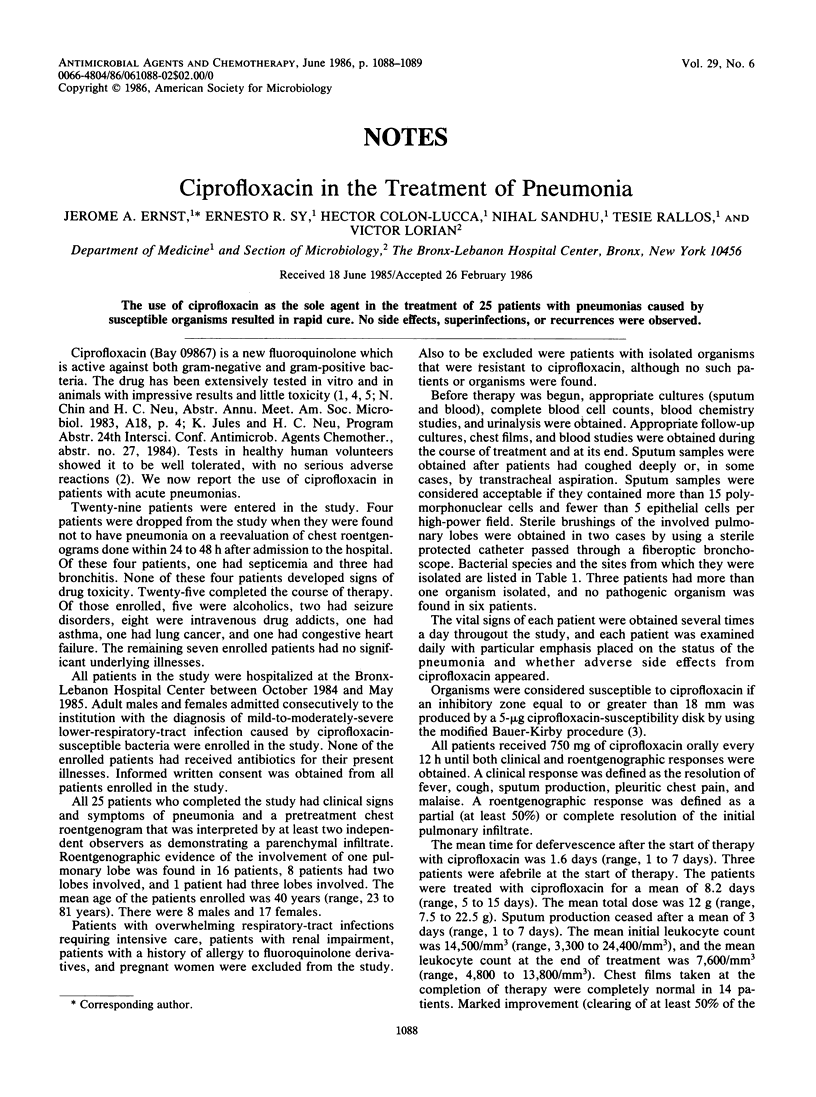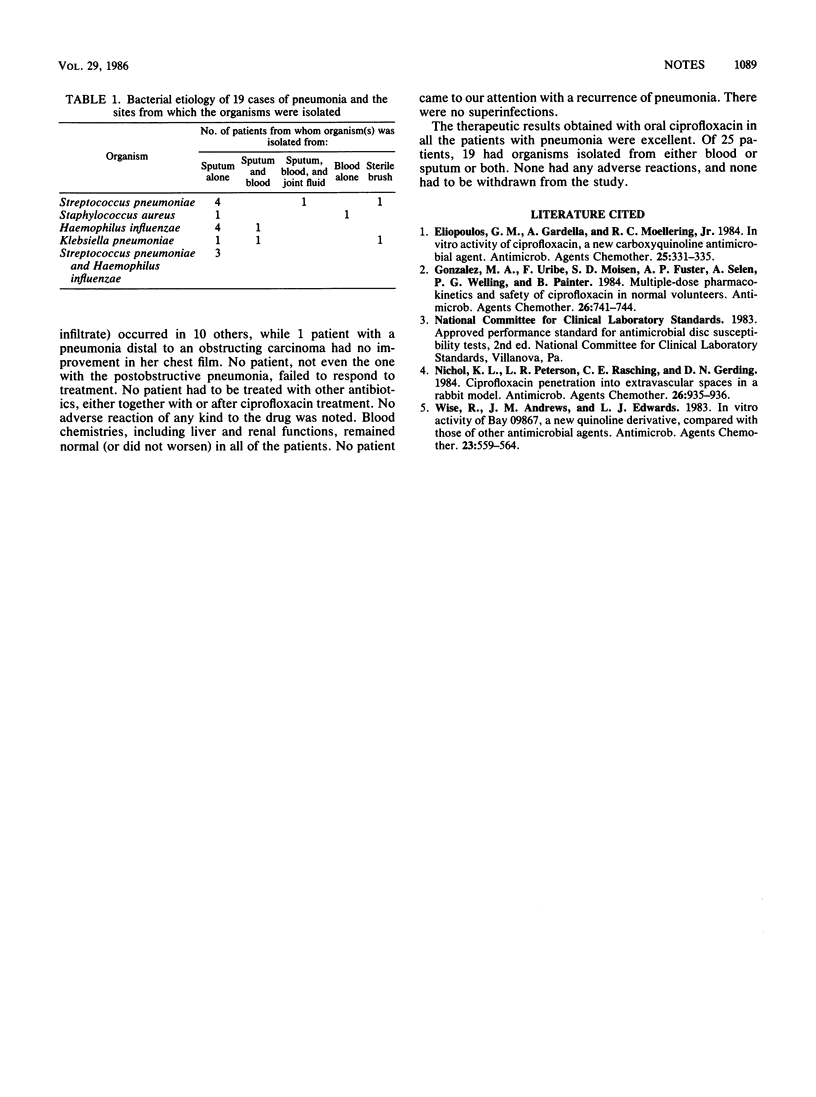Abstract
The use of ciprofloxacin as the sole agent in the treatment of 25 patients with pneumonias caused by susceptible organisms resulted in rapid cure. No side effects, superinfections, or recurrences were observed.
Full text
PDF

Selected References
These references are in PubMed. This may not be the complete list of references from this article.
- Eliopoulos G. M., Gardella A., Moellering R. C., Jr In vitro activity of ciprofloxacin, a new carboxyquinoline antimicrobial agent. Antimicrob Agents Chemother. 1984 Mar;25(3):331–335. doi: 10.1128/aac.25.3.331. [DOI] [PMC free article] [PubMed] [Google Scholar]
- Gonzalez M. A., Uribe F., Moisen S. D., Fuster A. P., Selen A., Welling P. G., Painter B. Multiple-dose pharmacokinetics and safety of ciprofloxacin in normal volunteers. Antimicrob Agents Chemother. 1984 Nov;26(5):741–744. doi: 10.1128/aac.26.5.741. [DOI] [PMC free article] [PubMed] [Google Scholar]
- Nichol K. L., Peterson L. R., Fasching C. E., Gerding D. N. Ciprofloxacin penetration into extravascular spaces in a rabbit model. Antimicrob Agents Chemother. 1984 Dec;26(6):935–936. doi: 10.1128/aac.26.6.935. [DOI] [PMC free article] [PubMed] [Google Scholar]
- Wise R., Andrews J. M., Edwards L. J. In vitro activity of Bay 09867, a new quinoline derivative, compared with those of other antimicrobial agents. Antimicrob Agents Chemother. 1983 Apr;23(4):559–564. doi: 10.1128/aac.23.4.559. [DOI] [PMC free article] [PubMed] [Google Scholar]


